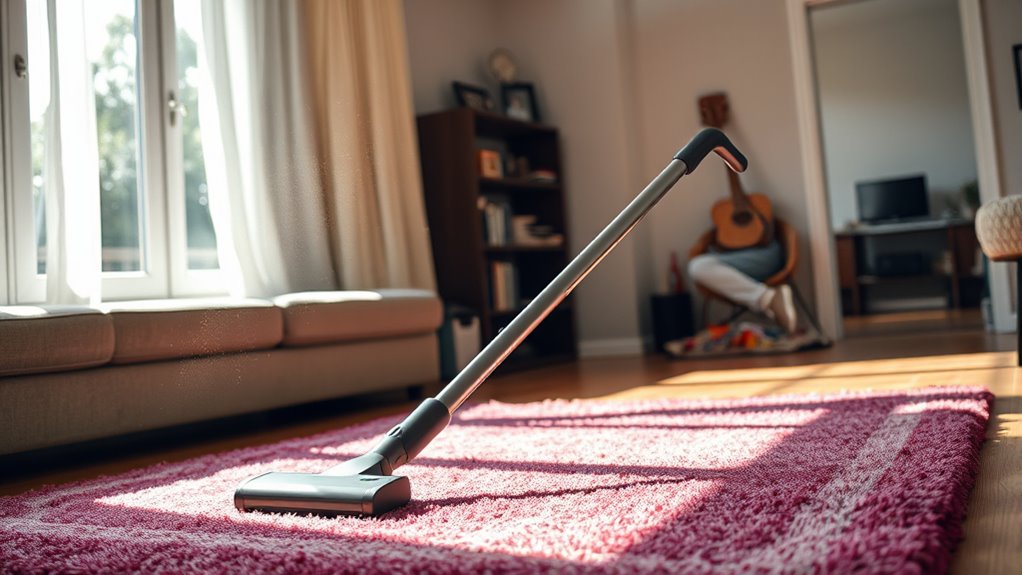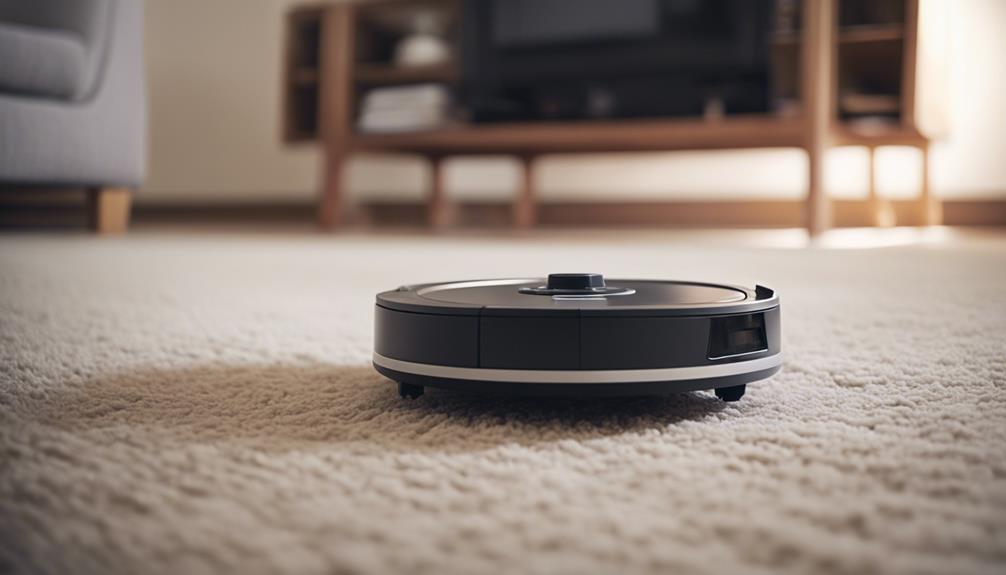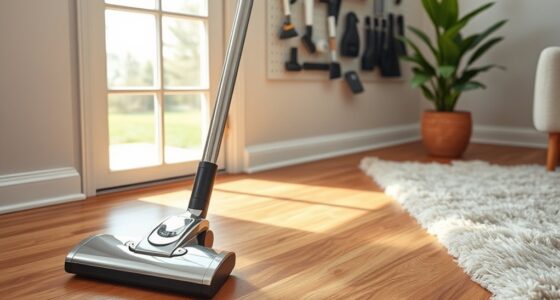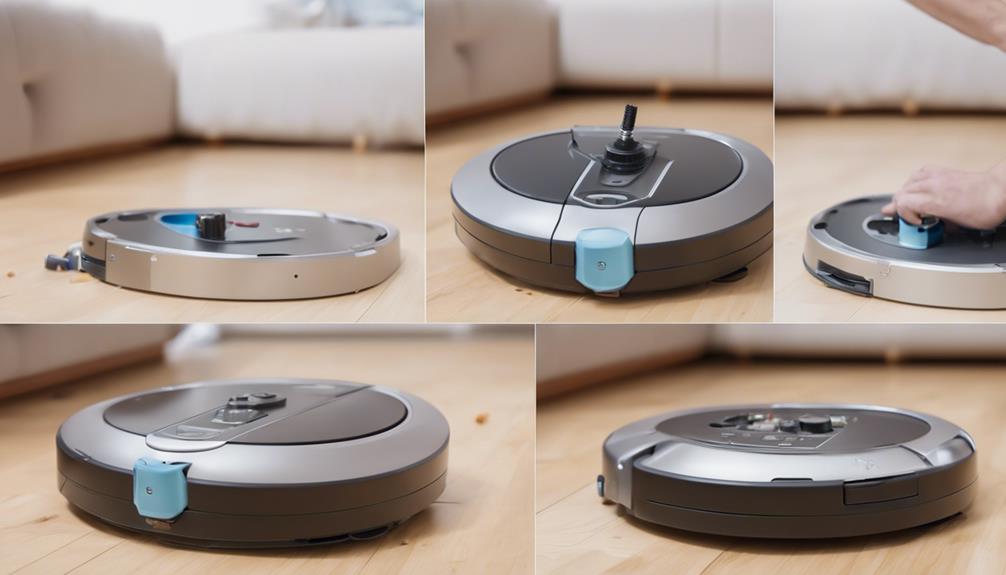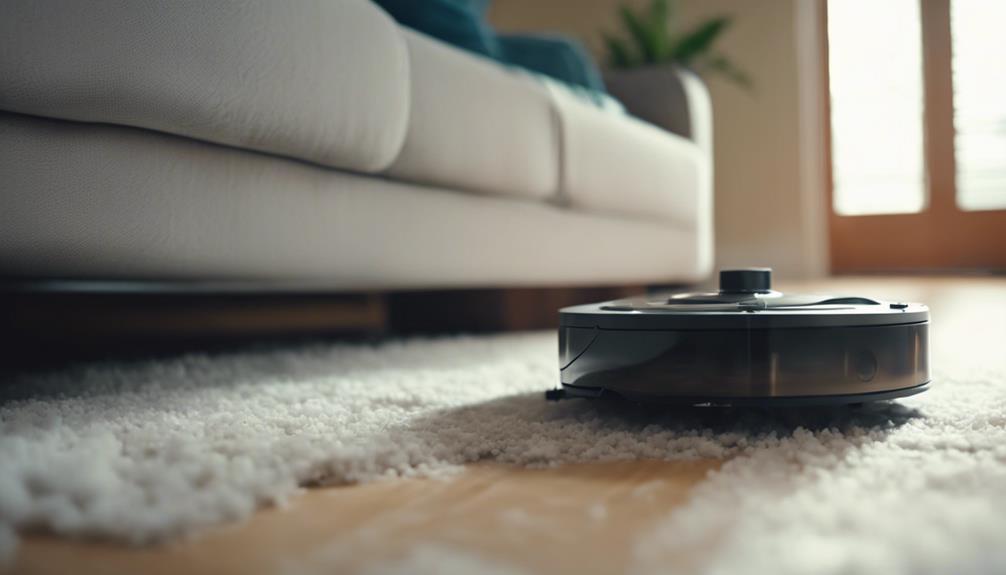You might think all vacuums are the same, but that’s a myth. Amp ratings don’t guarantee suction power; focus on water lift instead. Regular maintenance is essential for keeping your vacuum running efficiently, and bagged models often trap allergens better than bagless ones. Weight matters too; lighter vacuums can save you from strain. Plus, robotic vacuums offer convenience but aren’t always a substitute for traditional cleaning. Keep going to uncover more insights that could change your cleaning routine.
Key Takeaways
- Not all vacuums are created equal; suction power is crucial for effective cleaning, not just amp ratings.
- Bagless vacuums require maintenance; they can release allergens during emptying, unlike bagged models with superior filtration.
- Regular filter cleaning is essential; neglecting this can reduce suction power and overall vacuum performance.
- Vacuuming in multiple directions and using overlapping strokes ensures thorough dirt removal and extends carpet lifespan.
- Robotic vacuums are not completely autonomous; they still require regular maintenance and emptying to perform effectively.
Understanding Amp Ratings and Suction Power
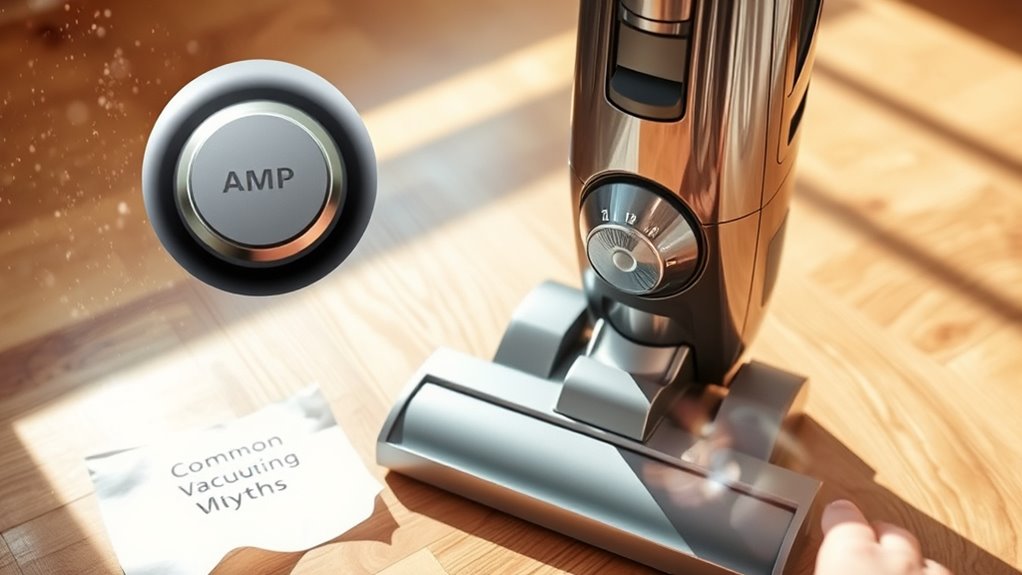
When you’re shopping for a vacuum, understanding amp ratings and suction power can seem overwhelming, but it’s vital for making an informed choice.
Amps measure the electrical current a vacuum draws, including all its components. Most vacuums operate below the standard 15-amp limit found in household outlets. While higher amp ratings indicate more power consumption, they don’t guarantee better suction performance. Best HEPA filter vacuums offer superior filtration, which is crucial for capturing fine dust and allergens. Regular maintenance, such as filter replacement guidelines, can also enhance a vacuum’s performance. Additionally, using a vacuum with HEPA filters can significantly improve indoor air quality by reducing allergens, as HEPA filtration captures 99.97% of particles as small as 0.3 microns. Some vacuums, like those from Bissell and Shark, are specifically designed for pet hair removal, enhancing their overall effectiveness.
Amps indicate a vacuum’s electrical draw, but higher ratings don’t ensure superior suction capabilities.
In fact, suction is measured as water lift, reflecting the motor’s pulling power. Higher water lift ratings indicate better performance in lifting heavier debris. Airflow, essential for moving dirt, often has an inverse relationship with suction; high suction can mean low airflow.
To evaluate a vacuum’s effectiveness, focus on suction and airflow rather than just wattage. This knowledge helps you choose a vacuum that truly meets your cleaning needs.
The Importance of Regular Vacuum Maintenance
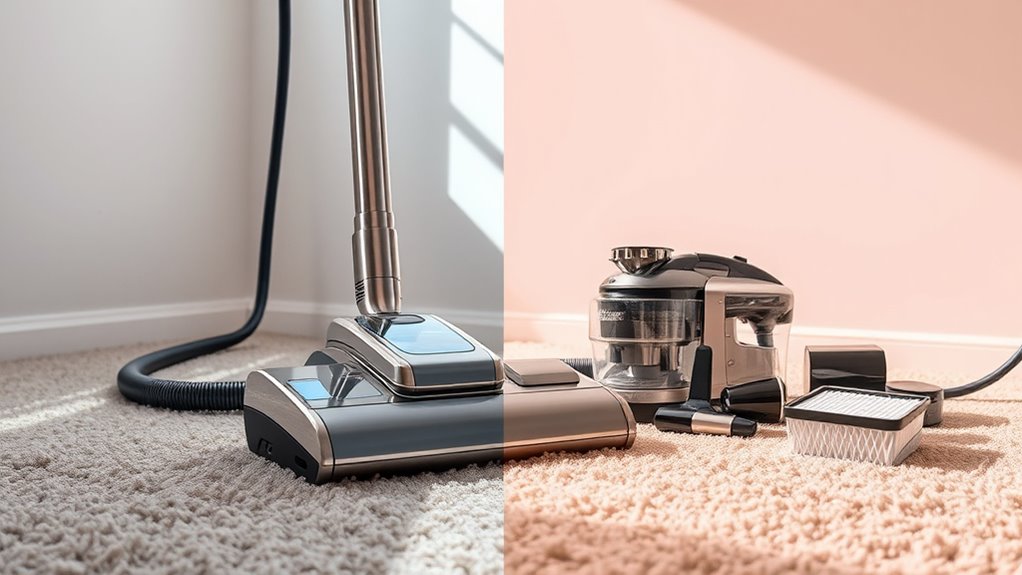
Regular vacuum maintenance is essential if you want to extend your vacuum’s lifespan and boost its cleaning efficiency. By taking care of your vacuum, you can also prevent costly repairs down the line. It’s a simple way to keep your home clean and your vacuum running smoothly. Additionally, cleaning the filter regularly helps maintain optimal suction and enhances indoor air quality. Regular maintenance, such as checking suction power and ensuring the brush rolls are free from debris, can significantly improve your vacuum’s performance. Moreover, proper airflow around the vacuum unit is crucial for effective cleaning. Implementing budget-friendly maintenance plans can help ensure that your vacuum remains in excellent working condition over time. Furthermore, emptying dust bins after each use is vital for preserving suction power and efficiency. Additionally, understanding your energy consumption patterns can help you choose the best times to vacuum, minimizing energy use while maximizing cleaning effectiveness.
Extend Vacuum Lifespan
To keep your vacuum running smoothly and efficiently, regular maintenance is crucial. By following a few key practices, you can greatly extend its lifespan:
- Clean Filters Regularly: This prevents airflow restrictions and reduces motor strain. Additionally, maintaining energy efficiency standards can contribute to better performance and lower energy costs for vacuuming. Regularly changing the filters can also enhance advanced filtration systems, ensuring optimal suction and allergen reduction. Furthermore, regular filter cleaning is crucial for optimal performance in air purifiers as well.
- Empty the Dustbin: A full dustbin can decrease performance and cause overheating. Additionally, replacing vacuums every 5-7 years is a good guideline to follow as part of your overall maintenance strategy. Establishing clear savings goals for maintenance can help you budget for necessary repairs and replacements.
- Check Hoses and Nozzles: Look for clogs or damage to maintain peak suction power.
- Store Properly: Keep your vacuum in a dry, cool place to protect its internal components.
Investing time in these maintenance tasks guarantees your vacuum remains effective and can save you money on replacements down the road.
Boost Cleaning Efficiency
Maintaining your vacuum isn’t just about keeping it running; it directly impacts how effectively you clean your home. Regular maintenance optimizes suction power, allowing your vacuum to pick up dirt and debris more effectively. This not only improves your cleaning efficiency but also enhances indoor air quality by preventing allergens from being released into the air. Plus, a well-maintained vacuum reduces energy consumption, saving you money on utility bills. By regularly emptying dustbins, cleaning filters, and inspecting belts and hoses, you guarantee that your vacuum performs at its best with less effort. This means you can clean your home faster and keep your carpets looking great for longer. Regular vacuuming prevents dirt and grit from damaging your carpets, ensuring they last longer. Additionally, just as heat pumps utilize renewable energy sources to enhance efficiency, a well-maintained vacuum ensures optimal performance and sustainability. Heated mattress pads are also designed to be energy-efficient, which aligns with the importance of maintenance for performance. It’s important to regularly check for safety standards to ensure your vacuum is operating safely and efficiently. Furthermore, just as heat pumps filter and circulate indoor air, effective vacuum maintenance can significantly improve your home’s air quality. Prioritize maintenance, and enjoy a cleaner, healthier living space.
Prevent Costly Repairs
While it might seem tempting to overlook vacuum maintenance, neglecting it can lead to expensive repairs down the line.
Regular upkeep is vital for preserving your floors, carpets, and overall air quality. Here’s why you shouldn’t skip vacuum maintenance:
- Floor Protection: Regular vacuuming prevents scratches and dullness on hard floors, saving you from costly repairs. Moreover, establishing clear rules for maintenance schedules can help ensure consistency in care. Additionally, maintaining a vacuum’s filtration system is crucial for effective dirt removal. Implementing the art of decluttering can also aid in minimizing floor debris and extending the life of your flooring.
- Carpet Lifespan: Frequent cleaning removes dirt that wears down carpet fibers, extending their usability. Additionally, high-traffic areas require more attention to avoid premature wear.
- Air Quality: Maintaining your vacuum improves air quality by reducing dust buildup, essential for health.
- System Performance: Proper maintenance, like cleaning filters, guarantees your vacuum runs efficiently and lasts longer.
Investing time in regular maintenance today can save you significant expenses tomorrow.
Bagged vs. Bagless: Which Is Better?
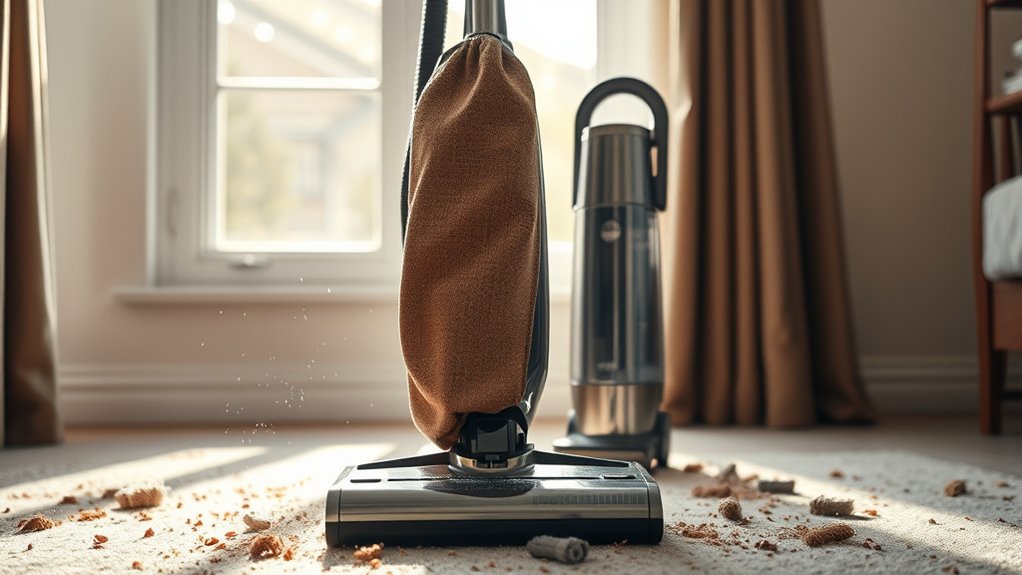
When choosing between bagged and bagless vacuums, consider how they impact allergies and your maintenance routine. Bagged models trap allergens effectively, while bagless options can release them during emptying. You’ll also find that bagged vacuums offer mess-free disposal, whereas bagless ones require more frequent cleaning and upkeep. Additionally, bagged vacuums provide superior filtration and allergen control, making them an ideal choice for homes with allergy sufferers or pets. Moreover, HEPA filters in bagged vacuums are known to remove 99.97% of airborne pollutants, enhancing overall air quality.
Allergy Considerations
Although both bagged and bagless vacuums have their pros and cons, if you suffer from allergies, bagged vacuums generally offer superior protection.
Here’s why:
- Sealed Design: Bagged vacuums trap allergens effectively within sealed bags, minimizing exposure.
- Dust Exposure: When you dispose of a bag, you’ll experience less dust release than with a bagless vacuum’s dustbin.
- HEPA Filters: Bagged vacuums often integrate HEPA filters more effectively, enhancing allergen trapping.
- Air Quality: Their sealed systems maintain better air quality, reducing airborne allergens in your home. Additionally, bagged vacuums often feature consistent suction power due to their design, which helps maintain performance over time.
If allergies are a concern, opting for a bagged vacuum can make a noticeable difference in your indoor air quality and overall comfort.
Maintenance and Convenience
Choosing between bagged and bagless vacuums often comes down to maintenance and convenience. Bagless vacuums save you from buying replacement bags but require regular filter cleaning to maintain performance. On the other hand, bagged vacuums keep dirt sealed but necessitate bag replacements, which can be inconvenient. Here’s a quick comparison:
| Feature | Bagged | Bagless |
|---|---|---|
| Maintenance Cost | Ongoing bag purchases | Filter cleaning needed |
| Waste Generation | Disposable bags | Less waste |
| Suction Power | Consistent performance | Can lose suction |
Ultimately, your choice depends on whether you prioritize convenience or eco-friendliness. Each type has its pros and cons, so consider your cleaning habits before deciding. Additionally, HEPA filters in bagged models capture 99.9% of allergens, making them a recommended choice for allergy sufferers.
Vacuum Weight: Does It Really Matter?

How much does vacuum weight really matter in your cleaning routine? The weight of your vacuum notably impacts your efficiency and comfort.
Here’s why it’s essential to take into account:
- Maneuverability: Lighter vacuums are easier to move around, especially on stairs or in tight spaces.
- Cleaning Efficiency: Heavier models may clean carpets deeper but can slow you down due to their bulk. Additionally, high suction power is crucial for removing deeply embedded dirt and allergens effectively.
- User Comfort: A lighter vacuum reduces physical strain, making cleaning less of a chore.
- Storage: Lighter vacuums are easier to store away, enhancing convenience for daily use.
Balancing weight with performance guarantees you pick the right vacuum for a hassle-free cleaning experience.
The Effectiveness of Robotic Vacuums
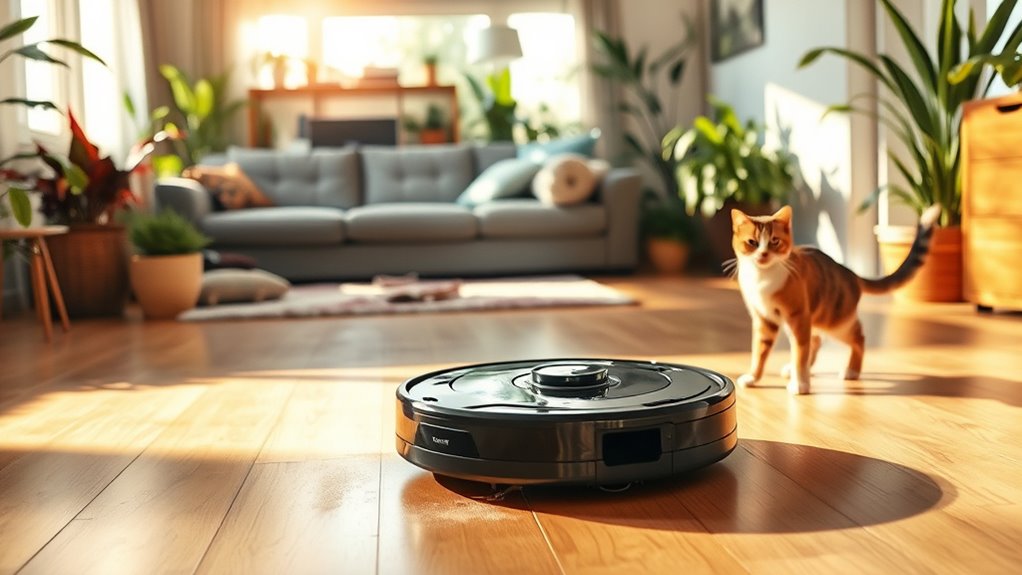
Are robotic vacuums really effective at keeping your home clean? Absolutely! The global market for robotic vacuum cleaners is booming, projected to reach nearly USD 5 billion by 2025. Their growth reflects a rising demand for convenience, especially among busy professionals and pet owners.
Equipped with advanced navigation systems, these vacuums efficiently map your spaces, tackling various surfaces like carpets and hard floors. Many models now feature improved suction power and smart home integration, allowing you to control them via apps or voice commands. With AI-driven navigation and innovative options like self-emptying stations, robotic vacuums are designed to save you time and effort. So, if you’re looking for an automated cleaning solution, they’re definitely worth considering!
HEPA Filters: Are They Enough for Allergen Control?
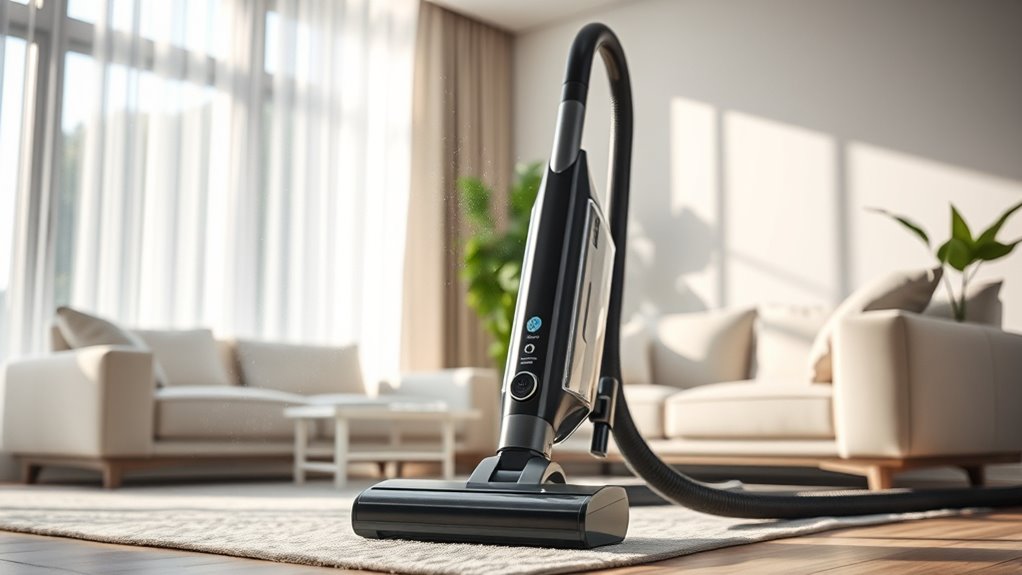
When it comes to controlling allergens in your home, you might wonder if HEPA filters are truly sufficient. While they capture at least 99.97% of particles as small as 0.3 microns, there are limitations to take into account.
Here are four key points to keep in mind:
Here are four essential considerations for effectively managing allergens in your home.
- Allergen Reduction: HEPA filters considerably reduce common allergens like dust mites and pollen.
- Embedded Allergens: They may not capture allergens embedded deeply in carpets or upholstery.
- Complementary Measures: Pair HEPA filters with other methods, such as sealing your home, to enhance effectiveness. Additionally, HEPA filters are effective at capturing smaller particles, including virus particles, which can contribute to improved air quality.
- Regular Maintenance: Change filters regularly to maintain ideal performance and prevent decreased efficiency.
Incorporating these strategies can greatly improve your home’s air quality and reduce allergy symptoms.
Key Factors for Choosing the Right Vacuum
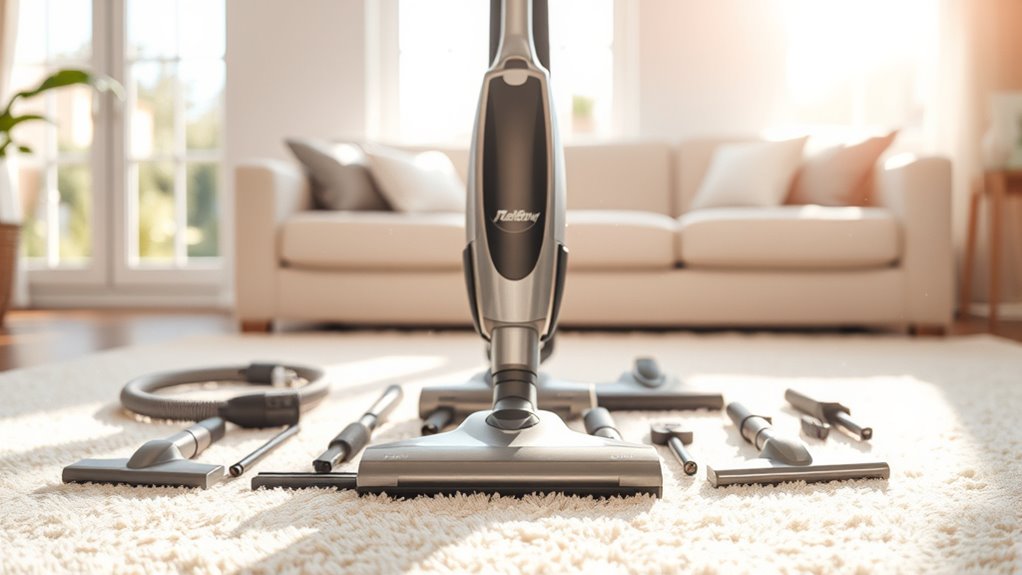
Choosing the right vacuum can make a significant difference in maintaining a clean and allergen-free home, especially if you consider your specific needs and environment.
First, think about your floor types—upright vacuums work best on carpets, while canister models excel on hardwood.
Assess your space and layout; tight corners or stairs may require a more maneuverable vacuum.
If you have pets, opt for models with specialized attachments and HEPA filters to tackle hair and allergens effectively. Additionally, ensure that you evaluate the filtration system effectiveness to prevent dirt from re-entering your home.
Consider the vacuum’s power, noise level, and additional features like adjustable settings and maintenance alerts.
Finally, balance cost with durability, ensuring you choose a reliable model that fits your cleaning frequency and budget.
Frequently Asked Questions
How Often Should I Replace My Vacuum Filters?
You should replace your vacuum filters regularly to maintain peak performance.
Generally, most filters need replacing every 3 to 12 months, depending on how often you vacuum and your home’s dust levels. If you have pets or a dusty environment, consider changing them more often.
Watch for signs like reduced suction, unpleasant odors, or visible wear, as these indicate it’s time for a replacement.
Regular maintenance prevents damage and keeps your air quality healthy.
Can I Use a Vacuum on Hardwood Floors?
Yes, you can use a vacuum on hardwood floors!
Just make sure you choose the right vacuum with adjustable suction and soft-bristled attachments. Avoid those with beater bars, as they can scratch your floors.
Before vacuuming, clear the area of furniture and rugs for easy access. Regular vacuuming helps maintain cleanliness and prevents dust buildup, so keep up with it to protect your beautiful hardwood surfaces!
How Do I Know When My Vacuum Needs Servicing?
You’ll know your vacuum needs servicing when you notice signs like reduced suction, unusual noises, or burning smells.
Check for full bags, clogged filters, or blockages in hoses. If it overheats or emits odd odors, it’s time for an inspection.
Also, pay attention to frequent clogs and longer cleaning times. Keeping an eye on these indicators will help maintain your vacuum’s performance and extend its lifespan.
What’s the Average Lifespan of a Vacuum Cleaner?
When it comes to your trusty vacuum cleaner, you might find it has a delightful journey of about 5 to 10 years.
Corded upright models typically thrive for 8 to 10 years, while their cordless counterparts tend to enjoy a shorter lifespan of around 5 years.
If you’ve invested in a central vacuum system, consider it a long-term companion, with the potential to last over 20 years with proper care and maintenance.
Are Expensive Vacuums Worth the Investment?
Are expensive vacuums worth the investment? Absolutely, if you value superior performance and durability.
They often offer enhanced suction power, advanced filtration systems, and innovative features that make cleaning easier. With better efficiency and longer lifespans, these vacuums can save you money in the long run.
Plus, improved air quality and reduced allergens benefit your health. Weighing the cost against these advantages can help you make the right choice for your home.
Conclusion
Now that you’ve debunked these vacuuming myths, you can tackle your cleaning routine with confidence. Remember, it’s not just about the vacuum you choose, but how you use and maintain it. Think of your vacuum as a trusty sidekick—together, you can conquer dust and allergens. So, whether you’re team bagged or bagless, keep these insights in mind, and you’ll be well on your way to a cleaner, healthier home. Happy vacuuming!
